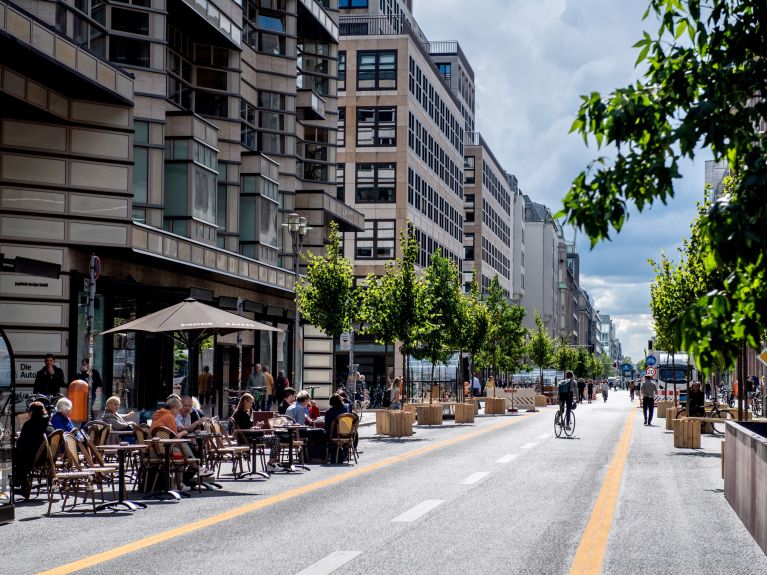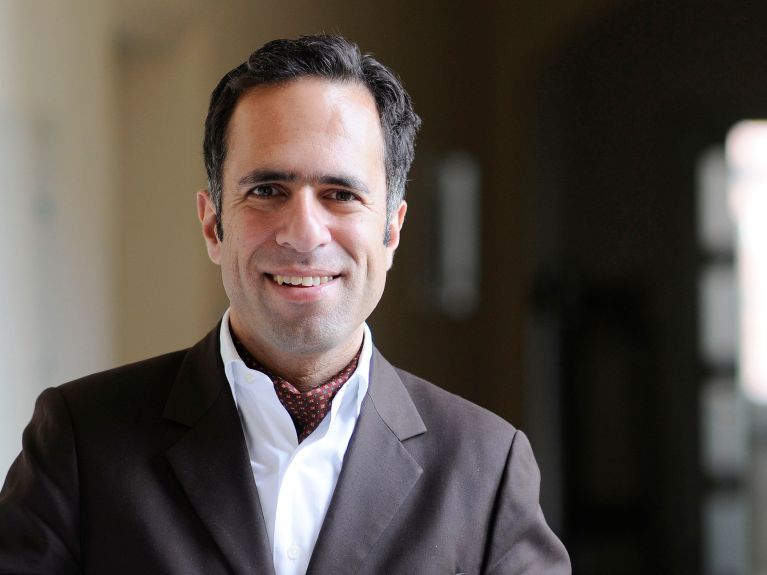The healthy city
What should a city look like for people to feel good? The neuro-urbanist Mazda Adli explains.

According to the UN, around 70 per cent of the world’s population will be living in cities by 2050. But cities cause stress far too often. Professor Mazda Adli, psychiatrist and senior consultant at the Fliedner Klinik Berlin and head of the research area Affective Disorders at the Clinic for Psychiatry and Psychotherapy at the Charité – University Hospital Berlin, explains what a healthy city should look like. He initiated the founding of the Forum on Neuro-Urbanism together with the Alfred Herrhausen Society.
Mr Adli, what exactly is neuro-urbanism?
Neuro-urbanism describes a close collaboration between urban research and health research. We want to understand how urban life affects our minds, and how we should design our cities so that they are beneficial to our mental health.
That’s why we founded the interdisciplinary Forum on Neuro-Urbanism in Berlin in 2015. It interlinks researchers at several universities. So far, this combination of very diverse disciplines, which includes urban research, medicine, neurosciences and psychology, is unique in the world.

There’s no such thing as the ideal city. A city does us good if it animates us to participate
How do cities affect humans?
City dwellers often suffer more from stress-related mental disorders than people living in rural areas. Up to now there has been virtually no research into the reasons for this. We believe that social stress is the basic cause.
How can we counteract this stress?
Social stress develops when social density in the city is coupled with anonymity and loneliness.
That is why urban planners need to ensure there are enough places that promote social interaction, for instance cultural facilities and institutions. On the other hand, we need to insist on better quality in housing construction. People should be able to exclude street noise from their homes.
What do you think the city of the future will look like?
There’s no such thing as the ideal city. A city does us good if it animates us to participate. It should provide a good balance between stimulation and relaxation. When we walk through our neighbourhood, there should be areas of tranquillity as well as cafés or shopping streets. The city needs to suit its inhabitants and provide them with space for self-fulfilment.
Which city in Germany would you describe as healthy?
Berlin is instinctively doing a lot of things right. There are wide roads that invite you to linger, and this counteracts social isolation. There is also a wealth of green areas which benefit our mental health. They help us to process stress much better. In addition to this, there is the cultural diversity which many people are able to enjoy.
You would like to receive regular information about Germany? Subscribe here:

